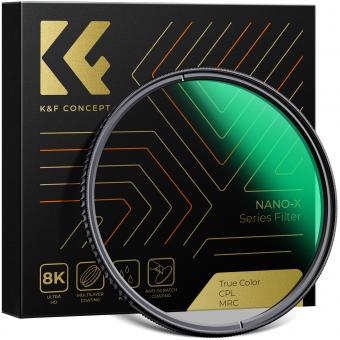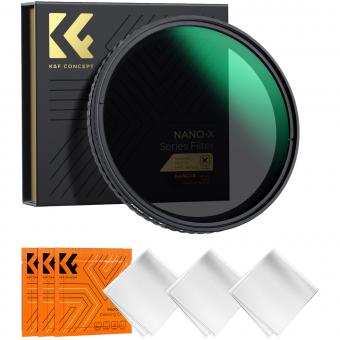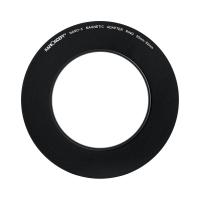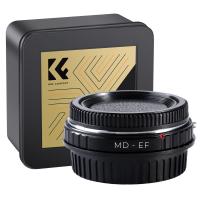When Were Microscopes Invented ?
The first microscope was invented in the late 16th century, with credit often given to Dutch spectacle maker Zacharias Janssen. However, the exact origins of the microscope are unclear, as there were several inventors and developments that contributed to its creation. The compound microscope, which uses two lenses to magnify objects, was developed in the early 17th century by Antonie van Leeuwenhoek and Robert Hooke. The invention of the microscope revolutionized the study of biology and medicine, allowing scientists to observe and study microorganisms and cells in detail.
1、 Early optical devices
Microscopes are a type of optical device that are used to magnify small objects and structures that are not visible to the naked eye. The history of microscopes dates back to the early optical devices that were used by ancient civilizations such as the Egyptians and Greeks. These early devices were simple lenses that were used to magnify objects, but they were not capable of producing clear and detailed images.
The first true microscope was invented in the late 16th century by Dutch scientist Zacharias Janssen. Janssen and his father Hans had been experimenting with lenses and discovered that by placing two lenses together, they could magnify objects up to nine times their original size. This invention was a major breakthrough in the field of microscopy and paved the way for further advancements in the field.
Over the next few centuries, microscopes continued to evolve and improve. In the 17th century, Antonie van Leeuwenhoek, a Dutch scientist, developed a single-lens microscope that was capable of magnifying objects up to 270 times their original size. This allowed him to observe and study microorganisms for the first time.
Today, microscopes are used in a wide range of fields, including biology, medicine, and materials science. They have become an essential tool for scientists and researchers, allowing them to study the smallest structures and organisms in great detail.
In recent years, there have been significant advancements in microscopy technology, including the development of electron microscopes and super-resolution microscopes. These new technologies have allowed scientists to study structures and processes at the molecular and atomic level, opening up new avenues for research and discovery.
2、 Antonie van Leeuwenhoek's microscope
Antonie van Leeuwenhoek's microscope is a significant invention in the history of science. It is believed that he made his first microscope in the late 1650s, which was a simple microscope with a single lens. He continued to improve his design, and by the 1670s, he had developed a microscope that could magnify up to 270 times. This microscope allowed him to observe and describe microorganisms, which he called "animalcules."
The invention of the microscope is generally attributed to the Dutch spectacle maker, Zacharias Janssen, in the late 16th century. However, the first recorded use of a microscope for scientific purposes was by Italian physician and biologist, Francesco Stelluti, in 1625. Antonie van Leeuwenhoek's microscope was a significant improvement over earlier designs, and it allowed him to make groundbreaking discoveries in microbiology.
Today, there is some debate over whether Antonie van Leeuwenhoek's microscope was truly a microscope or a magnifying glass. Some scientists argue that his microscope did not meet the modern definition of a microscope, which requires multiple lenses and a complex optical system. However, regardless of the classification, Antonie van Leeuwenhoek's microscope was a groundbreaking invention that paved the way for modern microbiology.
3、 Robert Hooke's compound microscope
Microscopes have been around for centuries, but the first recorded use of a microscope dates back to the late 16th century. The first microscopes were simple magnifying glasses, but over time, they evolved into more complex instruments capable of revealing the hidden world of microorganisms and cells.
The first compound microscope, which uses two lenses to magnify an object, was invented by Dutch spectacle maker Zacharias Janssen in the late 16th century. However, it was English scientist Robert Hooke who is credited with popularizing the use of the microscope in scientific research. In 1665, Hooke published his book "Micrographia," which contained detailed illustrations of various objects viewed through his compound microscope, including insects, plants, and even a slice of cork.
Since Hooke's time, microscopes have continued to evolve, with new technologies and techniques allowing scientists to see ever-smaller structures and organisms. Today, there are a wide variety of microscopes available, from simple light microscopes to electron microscopes capable of magnifying objects up to 10 million times.
Recent advances in microscopy have allowed scientists to study biological processes in unprecedented detail, leading to new insights into everything from the structure of proteins to the behavior of cells in living organisms. As technology continues to improve, it's likely that microscopes will continue to play a vital role in scientific research for years to come.
4、 Improvements in lens technology
When were microscopes invented? The first microscope was invented in the late 16th century, with credit given to both Hans Lippershey and Zacharias Janssen of the Netherlands. However, it wasn't until the 17th century that the microscope was refined and improved upon by scientists such as Robert Hooke and Antonie van Leeuwenhoek.
One of the key factors in the development of the microscope was improvements in lens technology. The ability to create lenses with higher magnification and resolution allowed scientists to see smaller and smaller objects. This led to groundbreaking discoveries in the fields of biology, medicine, and chemistry.
Today, microscopes continue to be an essential tool in scientific research and are used in a wide range of fields, from materials science to microbiology. Advances in technology have led to the development of new types of microscopes, such as electron microscopes and confocal microscopes, which allow scientists to see even smaller structures and details.
Despite the many advances in microscope technology, there is still much to be discovered and understood about the microscopic world. Ongoing research in this field has the potential to lead to new breakthroughs in medicine, materials science, and other areas of science and technology.







































